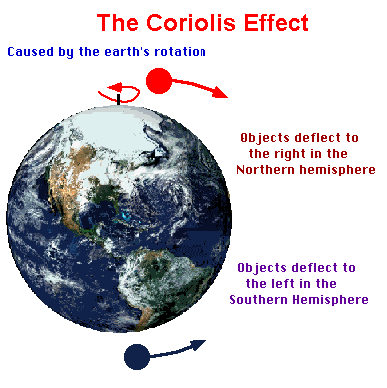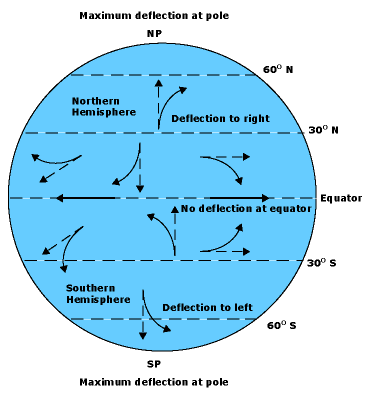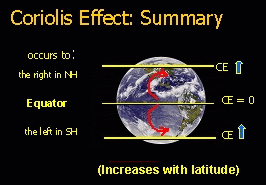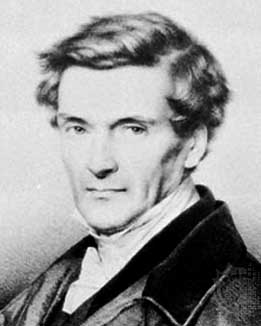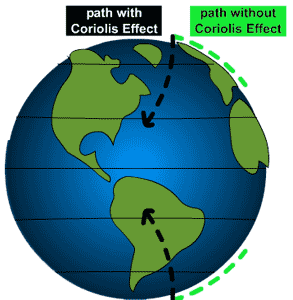|
The earth's rotation creates an apparent force ("Coriolis force") that deflects moving air to the right of its initial direction in the Northern Hemisphere and to the left of its initial direction in the Southern Hemisphere. The magnitude of the deflection, or "Coriolis effect," varies significantly with latitude. The Coriolis effect is zero at the equator and increases to a maximum at the poles. The effect is proportional to wind speed; that is, deflection increases as wind strengthens. The resultant balance between the pressure force and the Coriolis force is such that, in the absence of surface friction, air moves parallel to isobars (lines of equal pressure). This is the geostrophic wind. The Coriolis force explains why winds circulate around high and low pressure systems as opposed to blowing in the direction of the pressure gradient. The following figure shows how wind is deflected in each hemisphere:
The effect of the Earth's rotation on the atmosphere and on all objects on the Earth's surface. In the northern hemisphere it causes moving objects and currents to be deflected to the right; in the southern hemisphere it causes deflection to the left.
As air begins flowing from high to low pressure, the Earth rotates under it, making the wind follow a curved path. In the Northern Hemisphere, the wind turns to the right of its direction of motion. In the Southern Hemisphere, it turns to the left. The Coriolis force is zero at the equator.
Gaspard de Coriolis The effect is named after its discoverer, French mathematician Gaspard de Coriolis (1792–1843)
Credit: NOAA, NSIDC |

